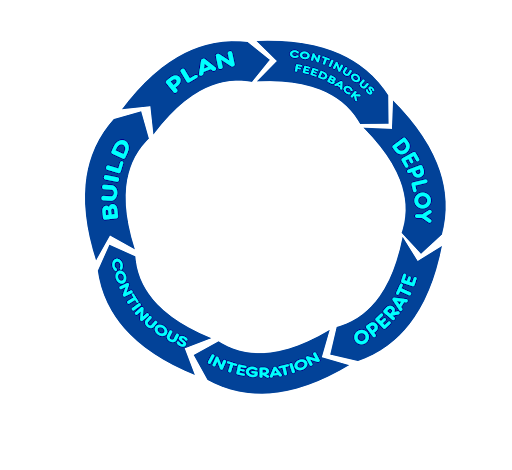How a Strong Quality Management System Powers Better Compliance, Audits and Customer Trust

In today’s competitive world, businesses succeed not only through visionary leadership or teamwork, but also through a commitment to quality. Maintaining consistent quality of goods and services is the cornerstone of lasting success.
In an era defined by rapid innovation and evolving customer expectations, an effective quality management system is a must. The latest quality management software enables an organisation to deliver consistent and high-quality products and services, minimising wastage and maintaining operational continuity.
By fostering continuous improvement and aligning processes with customer needs, a quality management system provides the foundation for sustainable growth and long-term competitiveness. Read on to learn more about how a strong quality management system powers better compliance, audits and customer trust.
Understanding Quality Management System

A Quality Management System (QMS) is a structured framework that defines an organisation’s quality objectives, processes, roles and responsibilities. The system ensures compliance with standards and regulations, integrates quality into daily operations, and enables the consistent delivery of high-quality products and services. An added benefit of the system is that it drives continuous improvement across all departments and operations.
Elements of a Quality Management System:
- Customer-Centric: Prioritising customer needs ensures satisfaction and fosters a loyal customer base. The aim is to achieve long-term organisational growth and maximum reach.
- Committed Leadership: Committed leadership fosters a culture of quality and alignment of goals across teams. The aim is to motivate employees to achieve shared quality objectives.
- Engagement of People: Involving employees at every level leverages their creativity and expertise, fostering a culture of innovation. The aim is to strengthen quality performance and achieve organisational success.
- Process Approach: Viewing activities as interconnected processes enhances efficiency and ensures consistent results. A quality management system enables complete systematic control over quality control operations.
- Continuous Improvement: Ongoing evaluation and innovation help an organisation to identify opportunities. The best quality management system ensures sustainable long-term growth, competitiveness and success.
- Evidence-Based Decision Making: Decisions rely on accurate data and analysis, ensuring continuous improvement and alignment with organisational quality objectives.
- Relationship Management: Building a strong and mutually beneficial relationship with suppliers enhances customer trust for a long-term successful business.
7 Benefits of Quality Management Software

Here are 7 essential benefits of the latest quality management software that ensure complete compliance and build customer trust:
- Ensures Complete Compliance
Implementing an ISO 9001-certified QMS helps organisations to stay compliant with regulatory standards, reduce risks and protect their reputation. By embedding their compliance into daily operations, businesses ensure consistent quality, build customer trust and gain access to new market opportunities across industries. With properly documented information, following updated compliance requirements also becomes more convenient for management.
- Builds Customer Trust
Using the latest quality management software demonstrates your reliability and commitment to customer satisfaction. Features such as real-time tracking of Key Performance Indicators (KPIs), audit management, and corrective action workflows help build customer trust. The management can perform consistently, ensure transparency and improve accountability which helps meet contractual obligations faster.
- Clear Inter-Departmental Communication
Latest quality management software ensures that all departments have access to the latest version of policies, procedures and quality documents. Cross-functional teams are able to share updates, assign tasks and comment on quality issues. Automated notifications and alerts keep the management informed about corrective actions and approvals. Performances are tracked in real time and progress on quality objectives is measured.
- Streamlines Audit Process
Audit management modules help in scheduling, planning and executing internal and external audits. Latest quality management software reduces manual documentation and maintains complete records for easy access during audits. With the generation of real-time audit findings and maintaining compliance status, the quality management team can improve the quality management system of a company.
- Prove Competency to New Businesses
A quality management system showcases an organisation’s competence and builds trust with new markets and clients. Many industries require certified quality systems but the management struggles with the starting point. The latest quality management software updates certifications enhancing credibility, assurance and global recognition. The leadership enhances eligibility for valuable partnerships and business opportunities.
- Minimises Operational Risks
A modern quality management system works on managing risks proactively. A quality management software manages risks by using real-time data analytics, by giving automated alerts and by analysing root cause analysis. This proactive approach prevents costly errors, enhances decision-making and reduces time by maintaining operational effectiveness during a crisis.
- Strengthens Supplier Collaboration
Centralised communication is an important feature of quality management software. Real-time data sharing and performance tracking tools help an organisation maintain a transparent quality standard. Automated document control and supplier audits ensure all partners meet compliance and quality requirements. Feedback collection and timely corrective actions help in maintaining trust, accountability and long-term partnership.
Conclusion
A quality management system provides a structured approach to ensure consistency, efficiency and continuous improvement. By documenting processes and calculating outcomes, quality management software helps businesses meet customer expectations and enhance reliability. Through precise auditing and proper compliance, an organisation is able to achieve long-term goals and gain a competitive advantage which is essential for sustainable success.
Frequently Asked Questions
- Which ISO specifies requirements for maintaining the high quality of products and services?
Answer: ISO 9001 specifies requirements for maintaining high quality of products and services. The standard ensures that high customer focus is maintained, engagement of people, leadership, evidence-based decision making and relationship management are maintained.
- Which ISO standard specifies requirements for managing data security?
Answer: ISO 27001 is the international standard that specifies requirements for establishing, implementing and continuously improving information security management systems. The aim is to ensure the highest data privacy and enable convenient availability of data to the authorised personnel.
- Are there any primary ISO standards?
Answer: Yes. The 3 main ISO standards are ISO 9001 (for maintaining the quality of products and services), ISO 14001 (for minimising the negative impact on the environment) and ISO 45001 (for ensuring maximum occupational health and safety of employees).
- Mention the 4 main elements of a quality management system?
Answer: The 4 main pillars or elements that comprise a quality management system are quality assurance, quality planning, stringent quality control and consistent improvement.
- What are the Level 4 documents in a quality management system?
Answer: Level 4 records include performance data such as training records, audit reports, inspection results and customer feedback. These documents demonstrate compliance, track improvement and validate quality processes that must be followed consistently.


